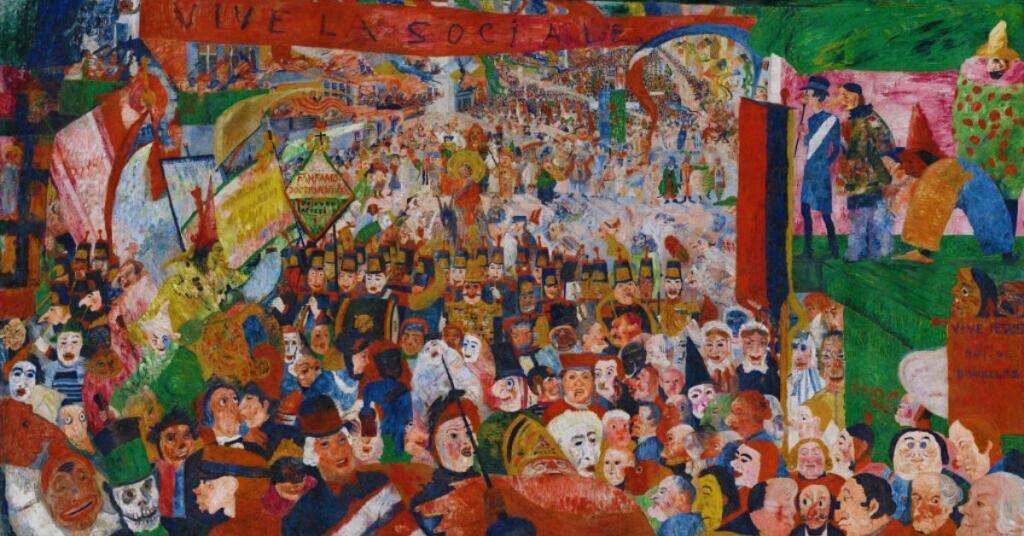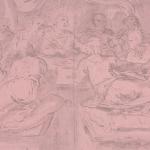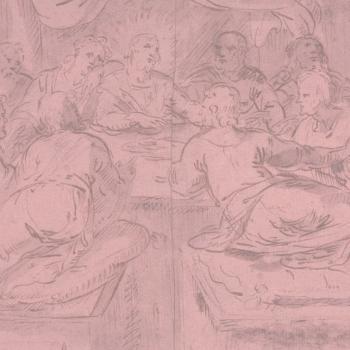
Whether you are Christian or post-Christian, any way you slice it, it seems we are tasked with making sense of Jesus in a bizarro world. What might Jesus and his life possibly have to say to the mess we seem to find ourselves in? The Lenten Season and the lead-up to Holy Week is always a good time to ponder some of these questions. But where do we even start?
In my previous post I talked about Lent and why these sorts of liturgical moments might still hold meaning for those of us who have moved past traditional notions of God and Christianity. As I always say, moving through these days on the Christian calendar can be challenging after we have had such a history with them. Most of us have experienced big church celebrations, special worship services, and repeatedly reminding us of how awful we are and how much we require saving. We are told stories of humble entries on donkeys, palms being waved, friends being betrayed, ears being cut off and then restored, a blood-sweating-savior as he begs for his life, the tortured abuse of an innocent man, and the abandoned, dying Jesus as he experiences the absence of his father and his god.
And now, as many of us find ourselves post narratives of salvation, atonement, and punitive judgment, is there anything left for us on such days of remembrance?
In a word, yes.
This Lenten Season I want to take a moment to talk about Palm Sunday and perhaps what we see as Jesus in a bizarro world.
I want to talk about Jesus and Palm Sunday through the eyes of James Ensor and his famous artwork, “Christ’s Entry into Brussels (1889).”
It is quite a sight to behold! I was lucky enough to view it where it is housed at the Getty Museum in LA. At the time, I didn’t have the theological prowess to think through Ensor’s narrative. I would love to go back sometime and just sit and look, although I would probably need to go back a million times to meet the depth and breadth of the artist truly.
In any case, it is a massive canvas! It is over 8 feet high and 14 feet wide. It depicts a significant procession coming down the street, overflowing like lava into the square. The entire crowd is donned with carnival masks—grotesque, crude, and absurd. They are concealing their identities, acting out their farce. Ensor’s painting technique is analogous to the jesters. He paints with heavy strokes, with rough, deeply textured slabs to continue to evoke the primal, discordant chaos that emits from this piece.
As Jesus rides into contemporary Belgium under a banner that reads Vive La Sociale, with his hand raised to the crowd, he is barely noticeable in this demonstrative scene. Deep into the backdrop, he is paid homage by several masked figures, all while the inescapable theme of mockery plays out.
Ensor’s painting is far from the traditional images of Christ riding into Jerusalem on Palm Sunday. A procession of priests, soldiers, other officials, and ordinary citizens, all under the message, “Long live the social [revolution]!” In 19th-century France and Belgium, Jesus was often used as a poster child for exemplary social reform. And while Ensor was a champion of liberal social reform, this painting seems not to support any particular ideology or politic. Instead, it mocks it all and condemns it.
This image shows a Mardi Gras celebration, the Christian festival just before the start of Lent, and it is a time to indulge one’s inhibitions with no accountability to identity. Masked, incognito, and faceless, one can mock their own humanity by paying no loyalty to it. Yet in this scene, we have Christ, who offers us new identities, yet we are still masked, not wanting to be seen, heard, or known, caring not for this Christ who seems to be lost in the crowd. As everyone else exaggerates their irreverent and profane attributes, Christ does what we all expect him to do, hold out his arms to the crowd while mocked by his onlookers, with no one interested in his identity nor identifying with him.
In a time of Mardi Gras, we are masked as we gratify reckless desires, and in a time where we are invited to lay our mask down, we hear not this invitation; we hear not Christ. No one cares to, as his presence seems utterly superfluous, unnecessary, and even laughable in this crowd of debase antics and fools.
I wonder what this image has to say to us today. During the Lenten Season and leading up to Holy Week in a time that presents itself in and to what seems like a bizarro world. Where God truly seems dead, at the very least, silent. Not close to the brokenhearted, but parades among the f*ckery as if it might mean anything to anyone.
This upcoming Holy Week has all the potential in the world to be a hollow one. Simply an empty clanging in a world that just needs to be let alone and given some rest.
Now that I have come to the end of unpacking just a tidbit of Ensor’s excruciating painting, I don’t really know what I want to say. What can I say amid some of the tragedy the world finds itself in? What comes to mind is that it’s OK for Jesus not to be victorious in every narrative. Seeing him as unhelpful, unnecessary, and sometimes embarrassing is OK. It is OK that amid our mask-wearing and the absurdity of so much we live among, that god seems not to be showing up in the way we would need a god to show up. It’s OK to feel like we are part of a humanity being mocked by our god(s), and it is OK to be reeling from all that is happening around us.
These high holy Christian holidays are hard enough for those of us who find ourselves past so much of what is considered Orthodox. But then you add all we are living through, and it becomes almost impossible. But if you have been around me long enough, you know that if there is a goal (and I use this term very loosely), it is to seek the Impossible god. The god that takes us by surprise; the one that is event and comes at us as it leaves us, haunting and taunting all the while. Jesus took the world by surprise as he rode in on that donkey 2,000 years ago. But nothing about Jesus takes the world by surprise now. The God we have turned Jesus into is predictable and calculable. Ensor’s Jesus rides into Belgium with no notice other than a few who take the time to continue to play out their theater using him as their current prop.
So what will it take for Jesus to take such a world as ours by surprise? This I have no knowledge of, and that is a good thing.
Wishing you all a surprising Holy Week and beyond.
















